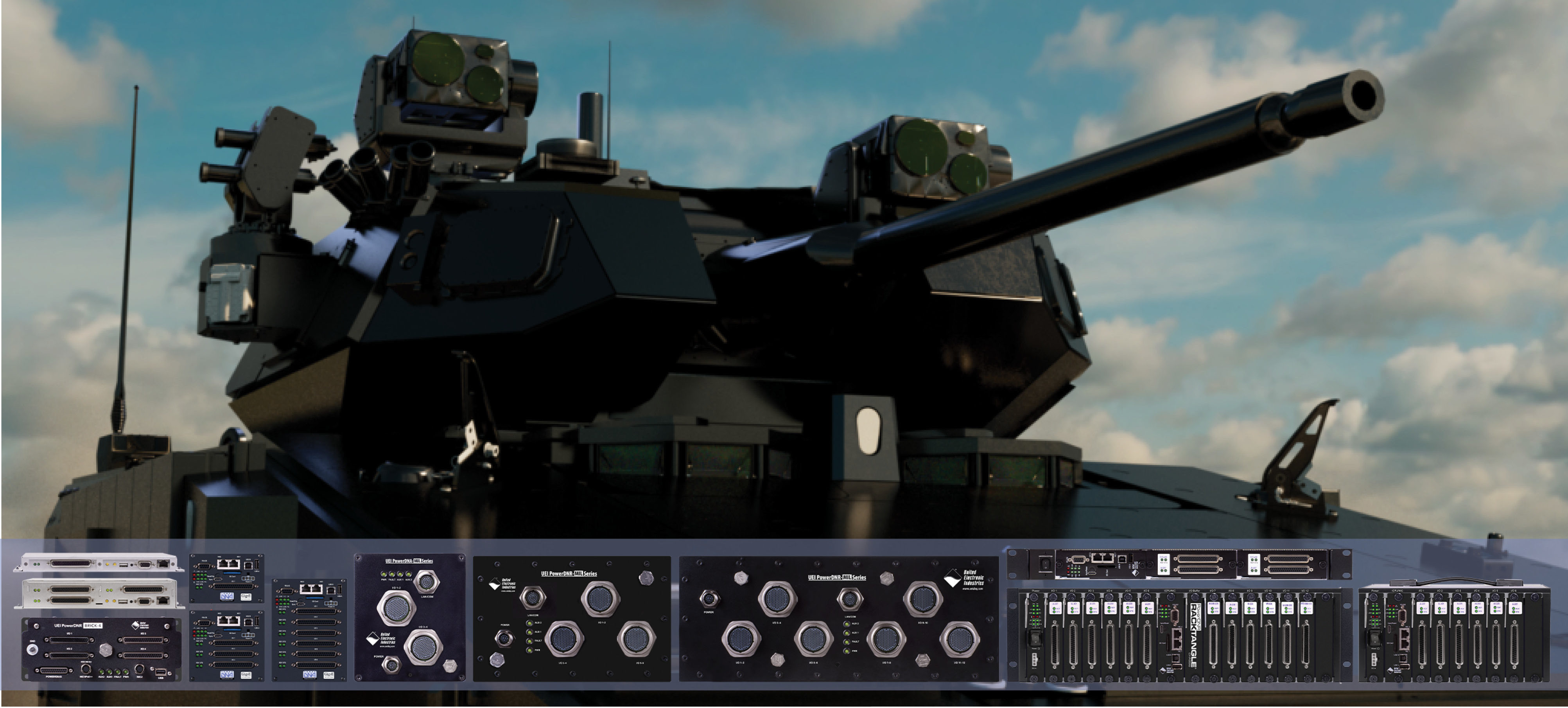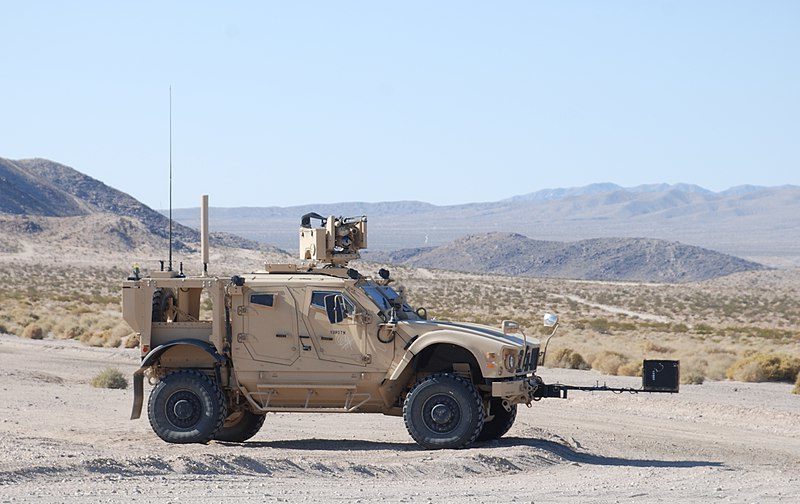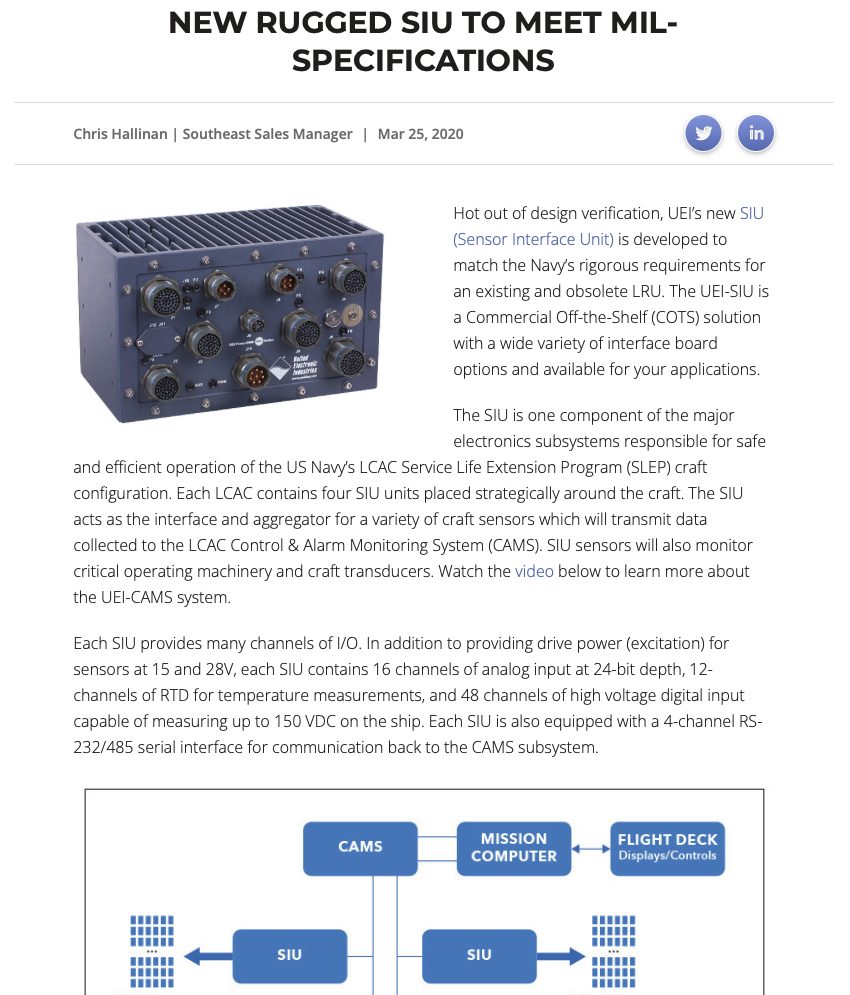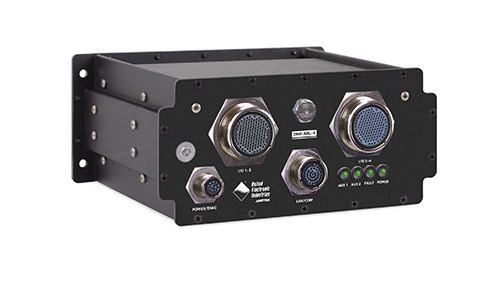Get in Touch
General
(508) 921-4600
Email Sales
Email Support
UEI Europe Office
+49 40 63698136
Email EU Sales
Visit this page for local offices and distributors.
UEI Supporting Ground Combat Systems Common Infrastructure Architecture (GCIA)


GCIA is a framework designed to enhance the capabilities of defense vehicles used in ground combat scenarios. At its core, GCIA offers a standardized and modular approach to integrating various subsystems and technologies into military vehicles. This architecture brings numerous benefits, such as the following:
GCIA PROMOTES INTEROPERABILITY AMONG DIFFERENT DEFENSE VEHICLE SYSTEMS.
- Through a common set of communication protocols, data formats, and interfaces, GCIA allows various components, such as sensors, weapons systems, and communication devices, to seamlessly exchange information and cooperate in real-time.
- This interoperability not only enhances situational awareness for vehicle crews but also enables efficient coordination between multiple vehicles, thereby optimizing tactical decision-making and response times on the battlefield.
GIA OFFERS SCALABILITY TO DEFENSE VEHICLES.
- The modular nature of GCIA allows for the integration of these new components without requiring a complete overhaul of the vehicle's architecture.
- Scalability ensures that defense vehicles can be easily upgraded to incorporate the latest advancements, extending their operational lifespan, and keeping them relevant in an ever-evolving threat landscape.
GCIA ADAPTABILITY OF DEFENSE VEHICLES IS A CRUCIAL ADVANTAGE.
- The modular architecture of GCIA enables defense forces to tailor their vehicles for specific missions by adding or replacing modules as needed.
- GCIA-equipped vehicles can be rapidly reconfigured to meet the demands of the situation, increasing overall mission success and troop safety.
The GCIA framework promotes seamless integration of subsystems, facilitates information exchange, and ensures that vehicles can keep up with technological advancements and evolving threats. UEI provides a suite of hardware solutions for GCIA-equipped defense vehicles to perform effectively in the complex and dynamic modern battlefield environment.
GCIA-ready TSN I/O Adapter Solutions from UEI

Time-Sensitive Networking is a set of IEEE standards aimed at enhancing Ethernet to provide real-time communication capabilities in aerospace, defense, and industrial applications, and is at the heart of GCIA. TSN enables deterministic and time-sensitive communication over standard Ethernet which is crucial for applications where precise timing and synchronization are necessary.
A "TSN I/O adapter" facilitates communication between TSN-enabled devices and the I/O components in a system. UEI I/O adapters play a role in integrating TSN-capable devices with sensors, actuators, and other I/O connected devices that require real-time communication and synchronization.
Defense vehicle applications can leverage UEI I/O adapters for various purposes that contribute to their functionality, safety, and mission success. Our adapters help connect the vehicle's internal systems with external devices, networks, or applications.
UEI Solution Benefits:
- Reconfigurable COTS Chassis
- Meets MIL-STD-810, -261, -1275, -704
- MIL-STD-1553, Serial, CAN Bridging
- Analog, Digital Acquisition and Control
- TSN Implemented in Hardware for Adapters, Bridges, and Avionics solutions
- Redundant TSN
- Microsecond Resolution for Scheduling
- Cybersecurity
- Vetronics
- And more!
LEARN MORE ABOUT TSN Download GCIA & UEI One Pager Download GCIA TSN I/O Adapter Datasheet
How UEI Supports Defense Vehicles With I/O adapter Solutions:
 | Communication and Data Exchange: Defense vehicles require communication capabilities to share data, commands, and information with other vehicles, command centers, and personnel. UEI hardware facilitates communication over various protocols, such as military networks, satellite communication systems, or secure data links. |
|---|---|

| Sensor Integration: Defense vehicles use a range of sensors for situational awareness, threat detection, and navigation. UEI hardware enables these sensors to communicate with the vehicle's control systems, providing real-time data to assist in decision-making. |
Vehicle Diagnostics and Maintenance: UEI hardware provides the capability to monitor the vehicle's health and performance through diagnostics. Maintenance personnel can use these adapters to access onboard systems, retrieve error codes, and perform maintenance and repairs. | |
 | Remote Operation and Automation: UEI hardware can enable remote operation, reducing the need for human presence in high-risk environments. This allows operators to control vehicles from a safe distance. |
Data Logging and Analysis: Defense vehicles often capture a wealth of data during missions. UEI hardware can enable the logging of this data for later analysis, helping to evaluate vehicle performance, mission effectiveness, and potential areas for improvement. | |
 | Integration with Command-and-Control Systems: UEI hardware facilitates integration with larger military command and control systems, enabling real-time sharing of data, mission updates, and situational awareness information. |
 | Ruggedization and Environmental Adaptation: Defense vehicles operate in diverse and often harsh environments. UEI hardware used in these contexts are designed to be rugged and resilient, capable of withstanding extreme temperatures, vibrations, and electromagnetic interference. |
 | Weapon Systems: In military applications, UEI hardware connect the vehicle's control systems to weapon systems, such as remote-controlled turrets, missile launchers, or UAV/UAS systems. This allows operators to control and monitor these weapon systems from within the vehicle. |
 | Encryption and Security: Security is paramount in defense applications. UEI hardware can incorporate encryption and authentication protocols to ensure secure communication and data exchange. |
 | Interoperability: In multi-vehicle or joint operations, different defense vehicles from various manufacturers may need to communicate seamlessly. UEI hardware can aid in achieving interoperability between vehicles with different communication protocols and hardware interfaces. |
UEI I/O adapters come in a variety of flexible and rugged chassis styles. With over 90+ I/O boards COTS, UEI offers standard communication protocols like Analog, Digital, Serial, CAN and more to establish communication with the vehicle's internal systems. All backed by UEI’s industry leading 10-year availability guarantee and a standard 3-year hardware warranty, with the ability to extend up to 10-years to mitigate obsolescence issues.
UEI & Rugged Data Acquisition & Control Solutions
UEI supplies DAQ, control, and test system hardware to meet the stringent requirements needed for defense industry applications. UEI has rugged and reliable solutions that are deployable in a variety of environments.
- Designed for Environmental Extremes (-45º to 85º C | 5g Vibe | 100g Shock).
- Chassis monitors temp, power, cards, and software for fail-safe operation.
- Redundant Ethernet helps guarantee fail-safe operation.
- Individual pins can be tested for short/open or against a reference.
- Designed for MIL-STD-461/1275/704/810 compliance.
Product Feature
 | NEW RUGGED SIU TO MEET MIL-SPECIFICATIONS UEI’s SIU (Sensor Interface Unit) is developed to match the Navy’s rigorous requirements for an existing and obsolete LRU. The UEI-SIU is a Commercial Off-the-Shelf (COTS) solution with a wide variety of interface board options and available for your applications. The SIU is one component of the major electronics subsystems responsible for safe and efficient operation of the US Navy’s LCAC Service Life Extension Program (SLEP) craft configuration. |
Cybersecurity for Your Defense Applications
UEI has cybersecurity solutions specifically designed to meet the stringent security requirements of aerospace and defense industries, these enhancements offer unparalleled data protection, secure boot, secure key generation and storage capabilities, FIPS 140.2 encryption, Trusted Platform Module (TPM) integration, and more to help you on your way to NIST 800-213 compliance.

UEI has compiled a three-tiered cybersecurity solution to empower aerospace and defense organizations with fortified data security and robust defense against evolving cyber threats.



